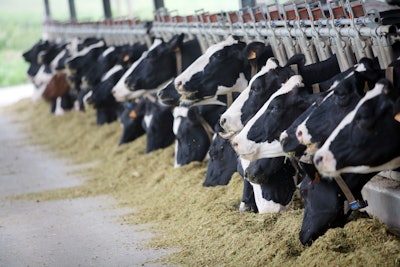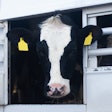
Highly pathogenic avian influenza (HPAI) has been confirmed in two commercial dairy operations in Kansas. This is in addition to three dairies in Texas, where cattle had been exhibiting flu-like symptoms including fever and thick and discolored milk accompanied by a sharp reduction in milk production.
Unpasteurized, clinical samples of milk from sick cattle collected from dairy farms in Kansas and Texas, as well as an oropharyngeal swab from another dairy in Texas, tested positive for HPAI, according to the U.S. Department of Agriculture (USDA) Animal and Plant Health Inspection Service (APHIS) website.
“Additional testing was initiated on Friday, March 22, and over the weekend because farms have also reported finding deceased wild birds on their properties. Based on findings from Texas, the detections appear to have been introduced by wild birds,” APHIS said.
This is the first time HPAI has been identified as affecting dairy cattle and only the second time HPAI has been detected in a ruminant. This month, H5N1 was found in goats in Minnesota on a farm where poultry first tested positive.
“The first detection of HPAI in dairy cattle in Texas and Kansas underscores the importance of adherence to biosecurity measures, vigilance in monitoring for disease, and immediately involving your veterinarian when something seems ‘off’,” said American Veterinary Medical Association (AVMA) President Rena Carlson, in a press release. “A complete evaluation, including the collection and submission of laboratory samples and reporting to state animal health officials when appropriate, and in a timely fashion, are incredibly important.”
Testing, monitoring continues
While it is too early to conclude that HPAI is responsible for illness in all of the affected dairy cattle, this finding marks important progress toward confirming a cause, AVMA said.
“We continue to encourage all dairy producers to closely monitor their herd and contact their local veterinarian immediately if cattle appear infected,” the Kansas Department of Agriculture said. “Symptoms are mostly restricted to late-stage lactating cows and include a drop in milk production, loss of appetite, and changes in manure consistency. We encourage dairy producers to minimize wildlife access to their dairy cattle’s water and feed sources.”
Federal and state agencies said they are moving quickly to conduct additional testing for HPAI, as well as viral genome sequencing, to better understand the situation, including characterization of the HPAI strain or strains associated with these detections.
“Initial testing by the National Veterinary Services Laboratories has not found changes to the virus that would make it more transmissible to humans, which would indicate that the current risk to the public remains low,” APHIS said.
Federal agencies are working with state and industry partners to encourage farmers and veterinarians to report cattle illnesses quickly so they can monitor potential additional cases and minimize the impact to farmers, consumers and other animals. For the dairies whose herds are exhibiting symptoms, on average about 10% of each affected herd appears to be impacted, with little to no associated mortality reported among the animals. Milk loss resulting from symptomatic cattle to date is too limited to have a major impact on supply and there should be no impact on the price of milk or other dairy products.
Milk supply remains safe
At this stage, there is no concern about the safety of the commercial milk supply or that this circumstance poses a risk to consumer health, the agencies said. Dairies are required to send only milk from healthy animals into processing for human consumption; milk from affected animals is being diverted or destroyed so that it does not enter the food supply.
In addition, pasteurization has continually proven to inactivate bacteria and viruses, such as influenza, in milk. The pasteurization process of heating milk to a high temperature ensures milk and dairy products can be safely consumed, as confirmed by the Centers for Disease Control (CDC). In line with longstanding policy, the CDC does not recommend consuming unpasteurized milk or raw milk. Pasteurization is required for any milk entering interstate commerce.














